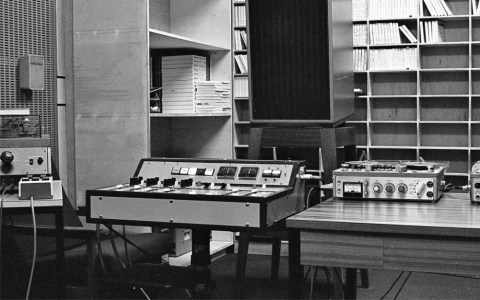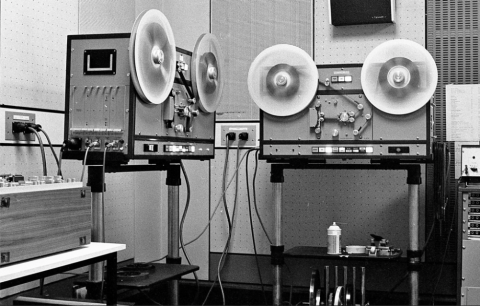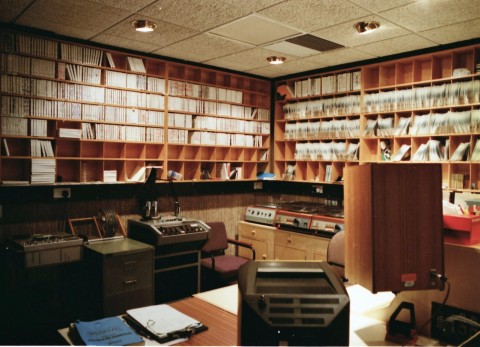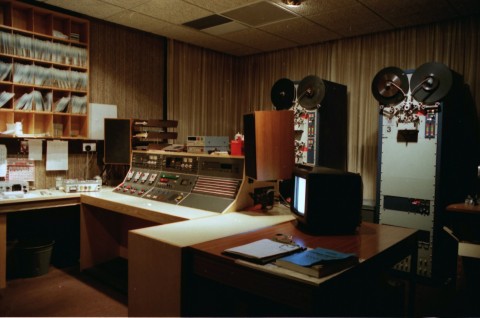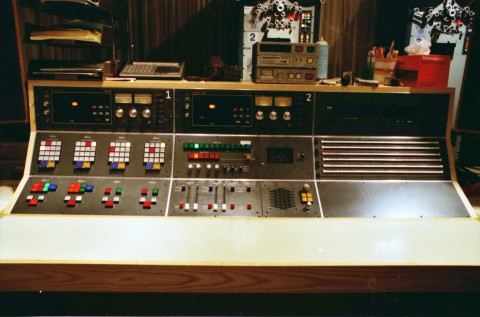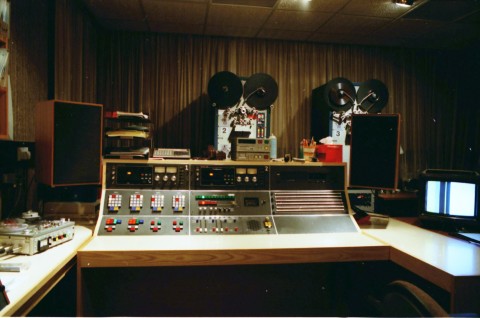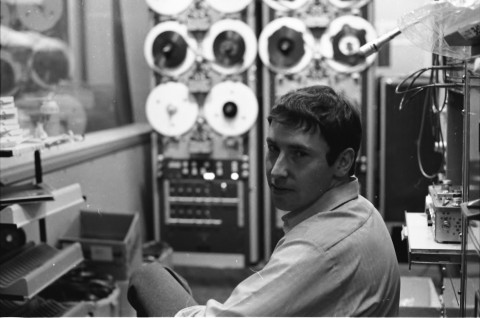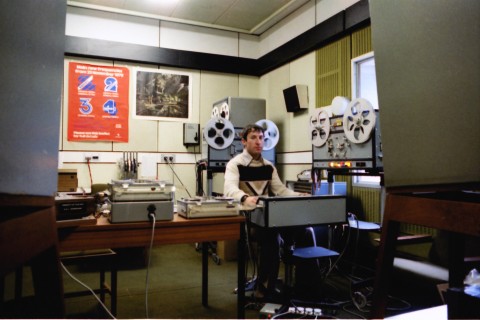Photos by Peter Poole, no reproduction without permission.
These photos are of the Film Sound Transfer Suite, G07, from the 1970s, at Pebble Mill. The machines in the lower photo are sep-mag recorders.
The following information was added on the Pebble Mill Facebook group:
Pete Simpkin: ‘Sep-mag was a boon to Regional TV news especially as it enabled proper independent editing of sound and picture at speed. The news stories were shot on cine film which had a magnetic coating along the edge onto which the location sound was recorded by the camera. After processing the magnetic strip, sound was transferred to separate magnetic film track, the same 16mm guage as the picture, and then the editors could drop in overlay shots whilst the sound was continuous on the sepmag. If there was time, dubbing and mixing of commentary and effects would be possible, but there was rarely time for this. As telecine operators, we had the challenge of ‘locking -up’ or synchronising the sepmag track and the picture film on the two machines for transmission. Time had to be built in to the programme running order for this to be achieved, but with things happening at speed, it was not unknown for the locking to fail and one of the reels could run wild and cause much mayhem! Happy days!’
Peter Poole: ‘Pete has described the sound process for regional TV news. Com-mag audio quality is only suitable for speech recording. Network and other regional TV progammes were shot on a crystal controlled film camera. The sound was recorded on a Nagra tape recorder. To ensure synchronization a pilot tone is recorded with the audio. In the transfer suite the pilot tone is synchronized and the audio is transfered to the Sep-Mag film. Sound transfer was originally carried out in the dubbing theatre record room. With the increasing film production this system became unable to cope. A dedicated transfer suite was set up in room G07. Pebble Mill was the first and probably the only one to buy PAG recorders. They were made in the UK and cheaper than the Perfecton recorders. The PAG machines had poor reliability. The breaks would often fail. Watching 2000 ft. of film being thrown across the room was not a good experience! They were eventually replaced by Perfecton machines.’
Andrew Godsall: ‘Those PAG machines had a meccano like quality about them. I turned up at Pebble Mill not long after GO7 was set up and it was just a conference room with equipment plugged directly together if I recall. It had domestic type cassette players and tape recorders as well as the PAG machines and a Nagra. But it was treated with respect and produced great results. Eventually the room was hard wired and connections appeared on a jackfield. It had a window on to the outside world and that could make it a good place to work.’
